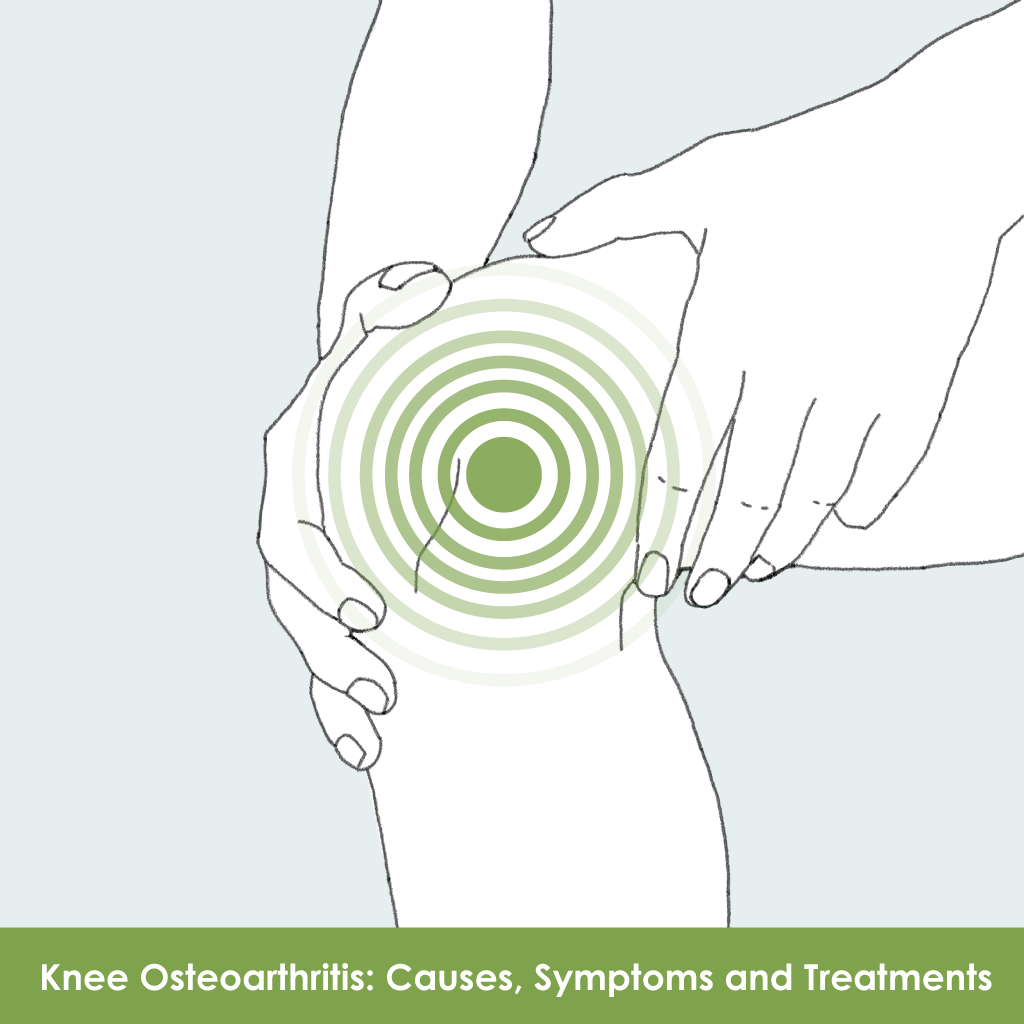Knee pain occurs because of a variety of causes; the most common being wear-and-tear and aging. “Patients don’t experience knee osteoarthritis; they experience knee pain,” explained Dr. Ramin Safakish, an anesthesiologist and fellowship-trained chronic pain physician at Allevio.
The cause of knee osteoarthritis is not completely known, but genetics have been linked to this condition. “For the genetic factor, we don’t know what the specific gene is,” Dr. Safakish said. “Even though the human genome is almost completely known, we don’t know which part of [the] genome [is] responsible for osteoarthritis.”
In some other patients, the immune system produces chemicals that target certain proteins inside the joints’ structure and damage them, which leads to the affected joint showing signs of arthritis.
Knee osteoarthritis occurs where the cartilage between the different bones of the knee joint wears away. Usually, the next stage in the process is the inflammation of the cartilage.
“Many people with knee pain — they don’t have bone inflammation yet,” Dr. Safakish explained. “And that’s the stage when we can do something. There are some options available when there’s inflammation to the bone and the bone starts to change shape.”
The joint’s healing process is different from the healing process of, for example, the muscle. This is because the joints do not have blood flow. There are some blood vessels in the cartilage, but not many. The fluid inside the joint is how the cartilage gets oxygen and nutrients. If damage happens to the cartilage, then the cells that can repair it cannot get to the cartilage.
“Our bodies can do repairs if the cells can go somewhere to repair it,” Dr. Safakish said. That is one reason that if the cartilage breaks down, or if the cartilage has a little crack in it, it won’t get better.”
Generally speaking, the amount of soluble oxygen that is available for the cartilage is less than other tissues that directly retrieve oxygen from the blood. Regarding the supply of oxygen to the cartilages, the oxygen must travel from the blood into the joint’s fluid. The fluid then takes the oxygen to the cartilage. Usually, the amount of oxygen is much less than everywhere in the body. The repair is much more difficult because the cartilage cannot repair and heal. That is the main reason why, when people get older, the joint gets worse.
“Remember that the cartilage doesn’t get blood flow. The only way it can get oxygen is from the fluid of the knee. If they push against each other, the fluid cannot get there,” Dr. Safakish reiterated.
For example, if a person is sitting in a car for two hours, their kneecap pushes against their femur because of the angle of the knee. After hours of sitting in a car, both layers of cartilage suffer from a relative lack of oxygen.
Dr. Safakish mentioned that this simple condition of everyday life is an example of different stresses tolerated by one’s knees. Physical stress can occur in multiple forms due to a patient’s occupation, trauma, or sports injury.
“If someone runs every morning, their joints would be much worse regardless of their genetics and immune conditions compared to a person who doesn’t run all day long,” he said.
Dr. Safakish talked about different mechanisms that nature employs to protect the joints as well. The most important protector of any joint is the musculature around it. Therefore, people who do not have well-developed or strong muscles around the knee joint have a much higher chance of osteoarthritis.
In terms of illnesses, patients who already experience another form of arthritis may run a higher risk of developing knee osteoarthritis. Another group of illnesses, including metabolic disorders, can make patients prone to osteoarthritis as well. Examples include excess growth hormones and gigantism.
“Not all damage to the cartilage causes fluid buildup,” Dr. Safakish added. “In fact, we do not really know why, in some conditions, we get [a] buildup of fluid in the knee. It seems the knee joint behaves differently in different people. For some patients, osteoarthritis is co-occurring by too much fluid. For some other groups of patients, we observe less than normal joint fluid or a dry knee… and they are both uncomfortable.”
In terms of treatment, knee damage and inflammation do not necessarily mean healing in the knee. Again, the cartilage inside the joints does not heal. “Unfortunately, still, we don’t have a set treatment,” Dr. Safakish explained.
“We can offer an ultrasound-guided injection of corticosteroids or PRP (platelet-rich plasma therapy), but what we offer depends on the patient’s history and condition,” he added.
Currently, Dr. Safakish is doing a study on the safety of stem cell injections for the treatment of knee and hip joints for Health Canada. “I am doing the first Health Canada-approved study to show the safety of [the] injection of stem cells to the knee,” he said. “We’re hoping that now, when you have a car accident and when you have acute damage to the cartilage, we can use your own stem cells and help heal the condition.”
A patient who is experiencing symptoms of knee pain combined with swelling or locking is encouraged to talk to their doctor. Patients may require a magnetic resonance imaging (MRI) scan of their knee for their doctor to determine the condition of the cartilage. Depending on the MRI findings, patients should consider consulting a specialist. More information can be accessed via Allevio’s medical research page and the videos on Dr. Safakish’s website.

